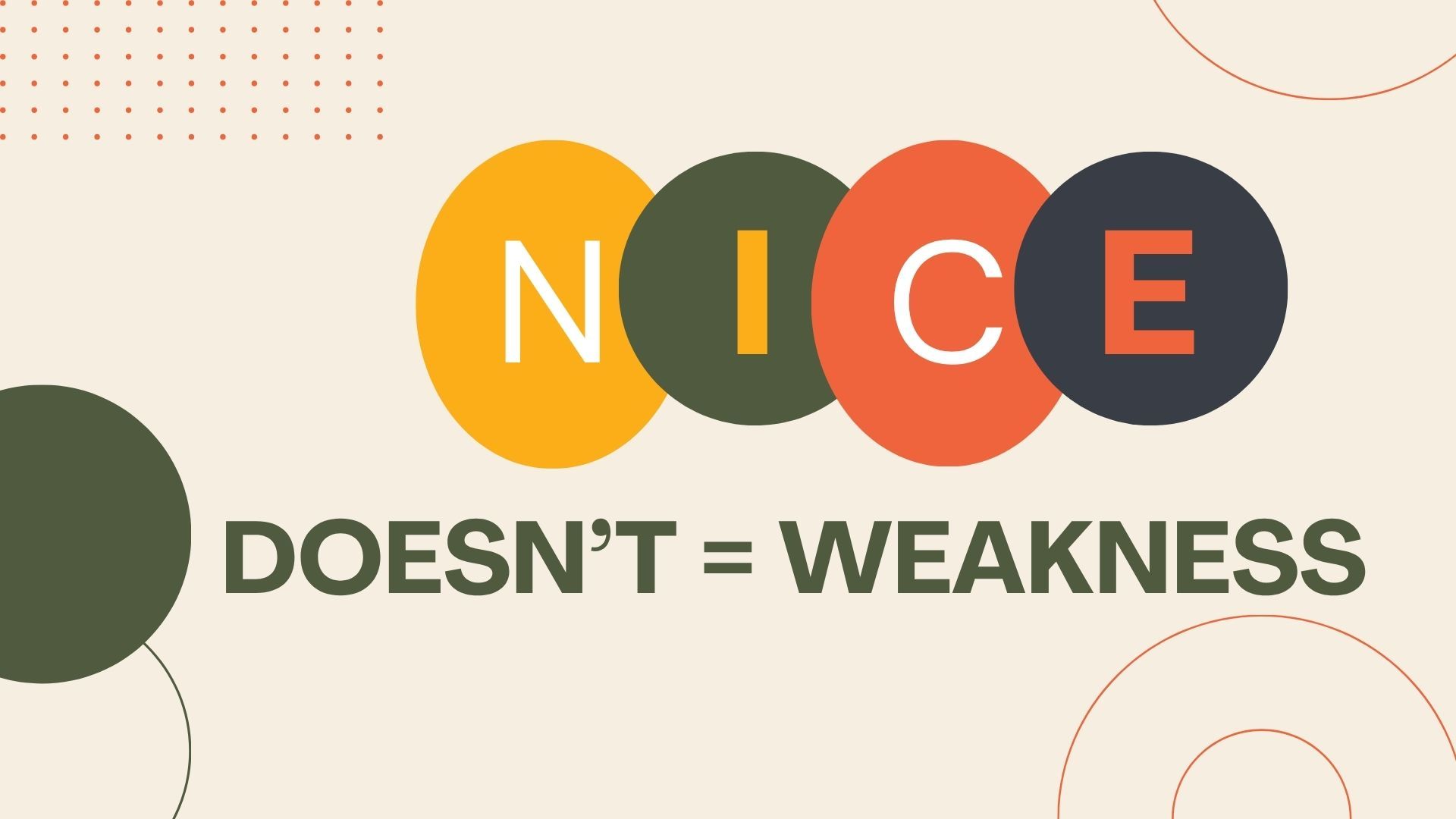Nice Doesn't = Weakness
Nov 02, 2025
It’s been one heck of a week. I’m glad it’s over and I’m still standing. As a leader you’ve probably wrestled with this tension: how to be nice without being a pushover. Or maybe you’ve had someone steamroll right over you during a difficult situation without so much as asking for your opinion or perspective. Somewhere along the way, some leaders began to believe that kindness signals weakness, that being firm, decisive, or respected means setting niceness aside. But here’s the truth: being nice and being strong are not opposites. In fact, the best leaders know that the two often work hand in hand.
You know this…leadership isn’t about barking orders or reminding everyone who’s in charge. It’s about creating an environment where people feel safe enough to do their best work even when the situation is tough. That means handling difficult conversations with compassion, giving feedback with empathy, and moving quickly when circumstances demand it without crushing people in the process.
Of course, there are moments when a command-and-control style is appropriate; usually in a true crisis where you’re the subject matter expert and time is of the essence. But even in a true crisis, there’s always time to ask your team questions and truly listen to their responses before making a decision. They can tell when your mind is already made up, and when you’re genuinely open to their insight. That trust matters. Be careful how you define “crisis,” too. Too often, leaders throw the word around to justify micromanagement or impatience. When everything feels like a fire drill, people burn out fast and the team loses trust. Every problem doesn’t have to be solved in a few hours. Taking the time to process the situation, allow others to process and explore all the angles of multiple solutions is time well spent.
One of my favorite leadership lessons about kindness comes from When You Wonder, You’re Learning by Gregg Behr and Ryan Rydzewski. The book dives into the timeless wisdom of Fred Rogers. Mr. Rogers connects his approach to modern neuroscience and leadership principles. Fred showed that kindness isn’t softness; it’s strength under control. He explored tough issues: race, divorce, fear, even death with honesty and calm. His tone was gentle, but his purpose was fierce: to help people, especially children, understand themselves and others better.
That’s what effective leadership should look like, but it seems we’ve often forgotten that approach. Who’s demonstrating that type of leadership these days? Are you?
It’s not about being “nice” to avoid conflict. It’s about leading with empathy, setting clear expectations, and following through with courage. You can be kind and still hold people accountable. You can show compassion while demanding excellence. The most respected leaders do both.
Here are a few ways to live that balance:
- Define “crisis” carefully. Ask yourself: is this situation truly urgent, or just uncomfortable? Not every problem needs a top-down solution.
- Lead with calm. Your tone sets the temperature. If you stay composed, your team can focus on solutions instead of panic. If a team member shows their emotions, give them a little grace and a little space to process the situation.
- Pair empathy with clarity. Listening to your team doesn’t mean you avoid tough calls. It means you make them thoughtfully.
- Model emotional intelligence. Show your team it’s possible to be direct and respectful. From my perspective EQ is way more important than IQ.
- Remember Mr. Rogers’ wisdom: “Anything that’s human is mentionable, and anything that is mentionable can be more manageable.” The same applies to leadership challenges. Talk about them, don’t bury them.
Nice doesn’t mean naïve. It takes tremendous self-control to stay composed when someone else is losing their cool or pushing your buttons. It takes real courage to pause, ask questions, and consider other viewpoints when you could just issue orders. Nice leaders aren’t weak, they’re disciplined. They don’t let ego or emotion dictate their next move.
In contrast, rash decisions made in frustration or fear may look strong in the moment, but they often reveal insecurity. Anyone can react; it takes strength to respond. Anyone can raise their voice; it takes wisdom to lower it. The leader who chooses calm over chaos, compassion over control, that's the one whose team will follow with loyalty, trust, and confidence.
Kindness isn’t weakness. It’s leadership at its highest level…steady, thoughtful, and strong enough to listen before leading.